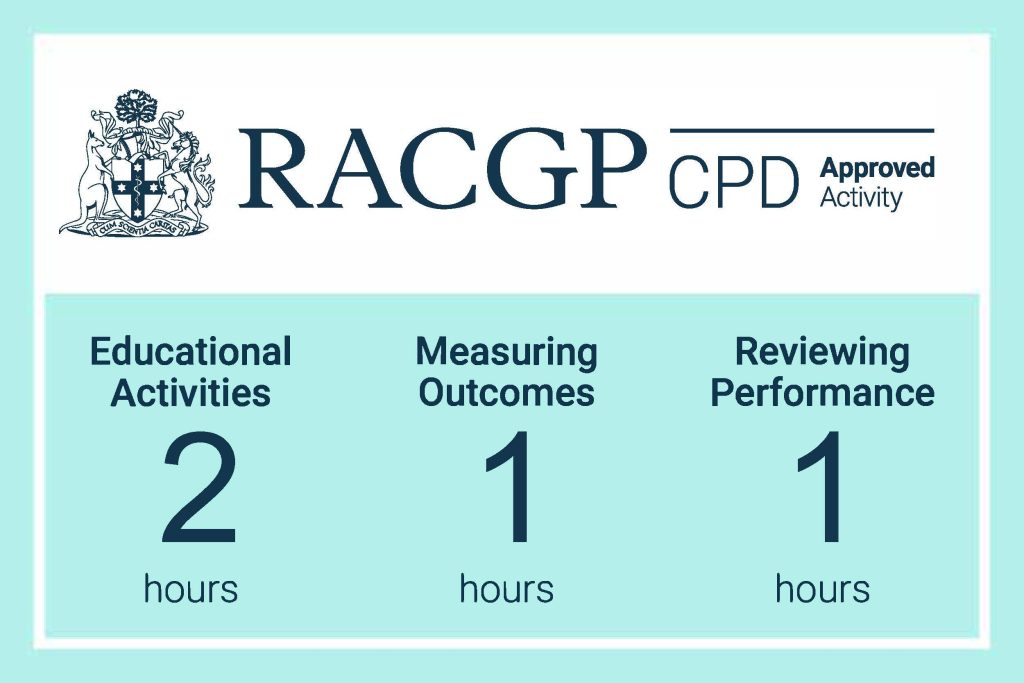Articles / Assessing young women’s mental health

In 2020 – 2022, almost half of females (46%) aged 16–24 years had a mental disorder in the previous 12 months, according to ABS data from the National Study of Mental Health and Wellbeing. Around 9% of females in that age group had self-harmed in the past 12 months, compared with 3% of their male counterparts. And 28% of females aged 16-24 had self-harmed in their lifetime.
Young women’s mental health has declined markedly since the previous National Study of Mental Health and Wellbeing in 2007 – and at a greater rate than young men’s.
And yet, despite the staggering statistics, no tailored strategy has been developed to reach young women.
Psychiatrist and Professor Jayashri Kulkarni AM of Monash University’s HER Centre talked to Healthed about what’s underpinning this worrying trend, and what practical things GPs can do to help.
Professor Kulkarni says biopsychosocial factors are all at play. Females in general have a greater vulnerability to environmental stressors— but are also subject to more violence.
“The thing we worry about particularly is violence that the young girl or woman might be exposed to in her home life. And that can either be emotional, sexual or physical abuse directed at her – or observing these things happening in her home environment.”
Talk to her without her parents present.
“Rather than just looking for bruising, which is obviously physical violence, it’s really important that the young woman who’s presenting get time away from her family with just the doctor to really discuss how are things going at home.”
“Once we’re dealing with a major minor, so a girl who’s 13 or 14 onwards — she is still a minor, but she’s a major minor.”
“And she’s perhaps got issues that she doesn’t want to discuss in front of her family or guardian, whether they’re sexual issues or substance use issues or abuse issues.”
“She’s not going to open up that easily with her mum or dad or stepdad or whoever sitting with her. At the same time we recognise that in adolescence, the parent and parent figures are critical in managing this patient, so it’s not about cutting them out entirely.”
“A GP can do this very subtly by saying, ‘look, I need to examine her, so could you just step out into the waiting room? And that’s a legitimate separation of the parent and the identified patient; not many people would object to that.”
What are the red flags to look for?
“It’s an important signal when you see the woman or girl staring at her shoes or staring down, not really responding, being monosyllabic or looking sullen.”
“Looking sullen is often really critical because there’s a whole lot that’s said in nonverbal language, particularly in adolescence.”
“They’re sometimes not the most verbal, even girls. So all these red flags are indicative that you might need to explore what is going on in more detail.’”
How can male GPs handle this situation?
“You’re going to have to rely on your knowledge of the patient, and perhaps that’s where it’s useful to have a female receptionist or another female staff member present – or if the patient’s more comfortable with a female GP, then a female colleague, doing the work.”
“The GP needs to protect himself, especially if it’s a him and you’ve got a young adolescent, it can be difficult. Of course, things can go astray with a female GP as well, but it’s less likely. Sometimes it’s important to have a chaperone in the room who is not family.”
What are other non-physical signs of trauma to look out for?
“You have to ask the patient the hard questions. Sometimes we shy away from asking the hard questions because of our own discomfort or there’s a sense of, ‘I’m not going to get anywhere.’ But if you give people the opportunity to unburden themselves, they usually appreciate that. You have to set the scene, and that is about rapport building.”
“It’s also about ensuring confidentiality of information, as much as can be guaranteed. Don’t lock yourself into a secret contract if you’re going to then have to deal with it, but it’s important to establish that kind of safety that, ‘yes, it’s OK to talk about these things with me.”
How to broach the subject
“And then ask the blunt questions. Adolescent girls will respond to, ‘Have you ever been in a situation where anyone has touched your breasts or your genitals without your permission?’
“It’s very blunt, but it’s easier to say yes or no to a question like that, rather than ‘have you had any inappropriate interactions?’ That’s very broad.”
“Sometimes even breaking it down into basic blunt questions, prefacing it with ‘I’m going to ask you some blunt questions because a lot of women I’ve seen have had terrible experiences. That’s why I’m asking you.’ So you’re giving context.”
“The doctor can ask these questions in a blunt way because they can preface it by saying things like, ‘Many girls and women experience unwanted abuse or unwanted touching in places such as breasts or genitals.’ And you have to be quite blunt about this to get that conversation going.”
“So that’s when you suspect this might be a young female who’s presenting with some symptoms of emotional, physical or sexual abuse, either in the house or by extended family—which are the commonest forms— or in relationships that she may have become involved in in recent times and doesn’t feel like she can talk to anyone else.”
What if she discloses abuse or trauma?
“If there is ongoing violence for someone under 18, that’s reportable. If it’s happening in someone over 18, then GPs can be absolutely instrumental in organising an exit from that household and can take an active role in referral to Orange Door or other places.”
Early onset mental health disorders
“There is also the group who are presenting with early onset mental ill health conditions like depression, anxiety disorders, deliberate self-harm or eating disorders. They’re the four big conditions.”
“There’s also psychosis or schizophrenia, but they’re much more likely in 25 to 30-year-old women. But it’s good to keep them in the back of your head.”
“Depression and anxiety are very common in young women and we’re seeing a lot more of them.”
“The first steps are taking a clinical story of the depression and anxiety symptoms and trying to understand what’s new in this young woman’s life.”
“So these are long consultations and they’re probably also going to be repeated consultations. You may not get the whole story in the first go, but you’re building the rapport so that she comes back and is seeing the GP as a great ally in whatever the issue is.”
Substance abuse
“We’re seeing a lot more substance abuse. And many times the index of suspicion for illicit substance abuse is not as high in young women as it is in young men.”
“And so it’s really a GP who’s got a rapport, who can get the real answers for things like, ‘Exactly how much are you drinking? Let’s sit down and have a discussion. What’s going on with the vaping? What else are you using?’”
“And the tone has to be such that it’s not inquisitorial, but it’s very much ‘I want to help you with your issues, so let’s have a think about what’s happening.’
Physical women’s health issues that are associated with depression and anxiety
“And then, of course, there’s all the physical women’s health issues that are associated with depression and anxiety.”
“So, for example, endometriosis, polycystic ovarian syndrome, painful periods, painful intercourse. All these gynaecological issues can have associated mental health issues as well. So, again, the GP is in a great position to marry the physical health and mental health combined.”
The menstrual cycle
“Fluctuations in hormone levels, particularly during the premenstrual phase when estrogen levels are lower, can also heighten vulnerability to conditions like premenstrual dysphoric disorder and impulsive behaviours like self-harm.”
“Combined oral contraceptive pills are the most important way of controlling those fluctuations in the younger population. And some pills are better than others. We believe that ZOELY is really the only mood neutral pill on the market. So that’s the one that we tend to prescribe in our clinic, although it’s not on the PBS.”
Deliberate self-harm
“Any mental illnesses can present with the symptom of deliberate self-harm as a despairing ‘I don’t know what to do and I hate myself.’ Especially the young woman who’s got fear of being overweight or hates her body or has a poor body image, or the woman who’s angry and might be in an abusive situation but she doesn’t know how to get help for that and then takes it out on herself.”
“In all of these situations, the GP is absolutely crucial to understanding what the next step should be and providing the assessment and an ongoing treatment plan.”
The tendency to dismiss self-harm as a symptom of borderline personality disorder, labelling it as manipulative or a personality flaw, can be damaging and stigmatising.
“We’re considering violence and we’re considering if this young woman might need to get out of the situation that she’s in.”
“And we have to also remember that general practitioners may be the first port of call, because if she is in a very controlling, violent relationship, for example, then she may be controlled to the point that she can’t get out of the house for any reason. And a trip to the GP is seen as something that is acceptable, so this may be her one shot at getting out and getting help.”
“This whole thing is allowing her to unburden herself, but in her time and in her way. And that means you have to almost sit on your hands, sit on your beliefs and let it unfold, which can be a test of patience, especially if there’s a lot that’s happening.”
“We’ve seen circumstances where the GP provides that safe place where she can talk about moving out or get assistance with how to do this and get referrals to organisations like Orange Door.”
“Psychology referrals are also important – clinical psychology or counselling referrals for relationship issues and for deeper work, if there are other conditions that require psychological input. Or if there’s a question of severe mental illness, then referral to a psychiatrist.”
The role of social media
“There are studies that suggest that more than four hours of immersion in social media continuously, or even in big chunks, is not good for mental health. So it’s another risk factor.”
“When you’re assessing suicide risk, you go through the risk factors, what are the things against and what are the things that are supportive.
So as one of those, you can and should, ask about social media input such as:
“Or even ask ‘Have you read anything or are you thinking about anything that is making you feel particularly bad or bad about yourself or bad in a sense of mental health depression?”
“It is important to include social media. Just as much as we ask about smoking and drinking and substance abuse, we should also ask about the amount of time spent in social media activities.”
“And again, the GP has to be comfortable and put it in a language that makes sense to the patient, because if you just sort of use the broad term social media, you can get blank looks.”
“So again, it comes down to that knowledge of the patient, knowledge of the social context that the patient lives in so that you can build rapport and then use the rapport to actually help the patient.”
“So you could say tell me what apps have you got? Have you got WhatsApp? TikTok? Instagram? And you’re listing them off and then you can ask, can you tell me what you’ve been reading or what have you seen recently?”
“You’ll get a very quick picture of, oh, ‘I saw this new diet and I’m supposed to only eat white stuff’…and then you’re into a discussion about eating and you have to not immediately go, ‘well, that’s crap.’ You’re going to have to hear and receive first before gently educating.”

Menopausal Hormone Therapy - What Dose of Estrogen is Best?

Cardiovascular Benefits of GLP1s – New Evidence

Oral Contraceptive Pill in Teens

RSV and the Heart

Modified but kept in place
Eliminated entirely without replacement
Maintained as is
Completely replaced with an alternative system
Listen to expert interviews.
Click to open in a new tab
Browse the latest articles from Healthed.
Once you confirm you’ve read this article you can complete a Patient Case Review to earn 0.5 hours CPD in the Reviewing Performance (RP) category.
Select ‘Confirm & learn‘ when you have read this article in its entirety and you will be taken to begin your Patient Case Review.
Menopause and MHT
Multiple sclerosis vs antibody disease
Using SGLT2 to reduce cardiovascular death in T2D
Peripheral arterial disease
